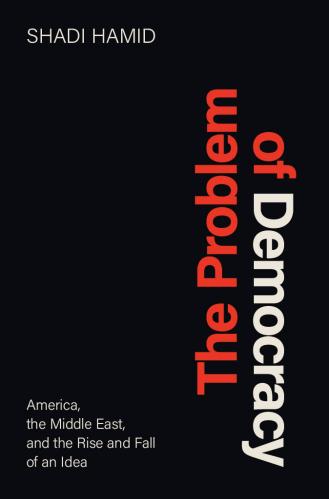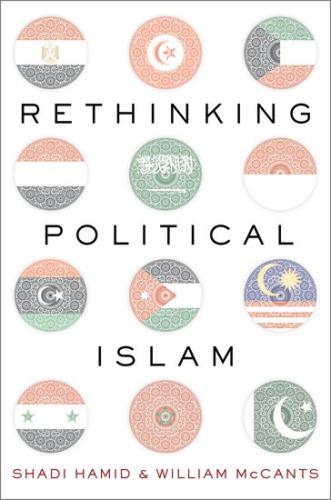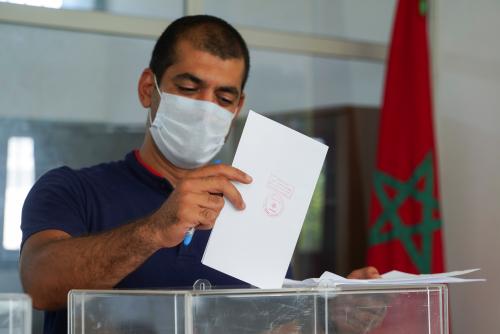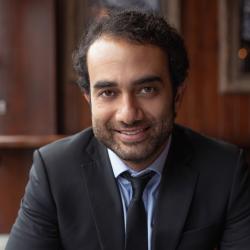In the United States, it is difficult to overstate the degree to which Islam has fallen off both the domestic and foreign policy agenda. In many ways, this is a welcome improvement over the near-constant preoccupation with American Muslims and Muslims abroad as objects of concern during the post-9/11 period. With the Trump administration’s “Muslim ban,” it seemed like it might never end, with each president having their own particular approach to the “problem” of Islam.
This appears to have ended with U.S. President Joe Biden. With the end of the war on terror, the securitization of Muslim identity is largely a thing of the past. American Muslims are increasingly part of the cultural mainstream, accepted and normalized to the extent that they sometimes appear to have been forgotten entirely.
That said, there is a dark side to America’s loss of interest in Islam and Muslims, especially since this indifference is tied to a broader apathy toward the Middle East. The Biden administration’s Middle East policy, as reflected in the recent National Security Strategy, is effectively one of telling regional actors to “keep calm and carry on.” The priority is to prevent the problems of the Middle East from crowding out attention towards more overarching problems, such as the threats posed by Chinese and Russian adventurism. (Whether policies toward particular regions can be siloed in this fashion is another matter).
To be uninterested in the Middle East is, by default, to be uninterested in human rights, political reform, and democratization in the Middle East. A policy of maintaining the status quo with only slight adjustments is inevitably a policy of turning a blind eye to human rights violations in the interest of “stability.” To anger regional partners with talk of their domestic political arrangements would require devoting more attention to assuaging that anger, which would distract U.S. officials from countering China and Russia.
Consider Saudi Arabia. In July 2022, Biden paid a high-profile visit to Saudi Crown Prince Mohammed bin Salman in an effort to reset a relationship that had been strained by the 2018 killing of the writer and critic Jamal Khashoggi. Since the visit, bin Salman’s crackdown on dissidents has only intensified.
In recent years, the decline of major terrorist groups like al-Qaida and the Islamic State has certainly relieved pressure on U.S. policymakers. But the Biden administration’s indifference to authoritarian consolidation in the region is an additional critical factor that allows it to display an otherwise welcome disregard for Islam.
Prospects for democracy in the Middle East have long been linked to questions around Islam’s role in public life. Any process of democratization, after all, would entail state authorities ceding control of religious knowledge and production — a domain they have jealously guarded for decades. In religiously conservative societies, something as resonant and powerful as Islam couldn’t be left to the masses, or so Arab autocrats thought. If people could choose their own leaders, religiously-oriented parties — Islamist parties — would have a greater say in politics and government and perhaps win elections outright. The failures of the Arab Spring and the return of repression have relegated such questions to the background. Fierce states are even fiercer today. But as I argue in the latest issue of Current Trends in Islamist Ideology, the “problem” of Islam has merely been postponed; it has not been resolved.
It’s no accident that the two administrations that focused considerable attention on Middle East democracy (or the lack thereof) were also the ones that felt compelled to make Islam-related pronouncements. While the Bush administration ultimately failed to translate its sweeping pro-democracy rhetoric into policy, former U.S. Secretary of State Condoleezza Rice does deserve some credit for grasping the intimate link between “political” problems and “religious” problems in the region. To address the former was to take seriously the latter. For example, she notes that “religion and politics don’t mix easily — but the exclusion of religious people from politics doesn’t work either” and that the Arab world “desperately needs an answer to [this] challenge.”
While President Barack Obama was less enthusiastic about democracy promotion (in part due to a desire to distance himself from the Bush administration’s adventurism), he was compelled to take it more seriously during the Arab uprisings of 2011. And he too understood that to have a policy of promoting political reform and inclusion meant thinking carefully about America’s longstanding “Islamist dilemma.” As one senior aide to Obama described it to me:
Obama started off very much of the view that we need to accept that Islamists will have a role in government. I think he came in very much believing in that and he wanted to be the president who would have an open mind about Islamists.
This “open mind” didn’t necessarily last, but it’s telling that the Obama administration felt it had to think about Islamism in order to think about democracy. The inverse was true for President Donald Trump. His active hostility towards democracy promotion and enthusiasm for Arab dictators translated into a desire to exclude and even punish Islamist groups like the Muslim Brotherhood.
It would have been hard to avoid this conclusion. To the extent that Arab societies democratized, voters would have more to disagree about when it came to Islam’s place in politics and its relationship to the state. Under the limited electoral competition that Arab autocrats had allowed beginning in the 1980s, “identity politics” around religion gradually eclipsed the traditional left-right politics of class as the primary electoral cleavage. And so emerged what the political scientist Hesham Sallam calls “classless politics.”
Islamist parties were the primary beneficiaries of this shift. But since there was no real risk that they would be allowed to take power, the practical implications of their ideological preferences could remain somewhat theoretical, projected far out into the future. With the democratic openings of the Arab Spring, however, this all changed. Now that Islamist parties had a realistic shot at winning power, the question of how — or whether — to accommodate a more pronounced role for Islam rose to the forefront of Arab politics in a way that it rarely had before. Moreover, constitutions had to be drafted, and constitutions would need to address (or at least choose not to address) the polarizing matter of Islam as a source of state identity and Islamic law as a source of legislation. A political and religious settlement remained elusive in Egypt, paving the way for the establishment of a new military dictatorship under Egyptian President Abdel Fattah el-Sisi. Even in Tunisia — until recently the Arab Spring’s lone remaining (relative) success story — Islamist, secular, and leftist political forces appeared to reach such a settlement only to see it collapse. Today, after a slow-motion coup, Tunisia finds itself languishing under one-man, authoritarian rule.
With a new authoritarian normal asserting itself across the region, the ongoing effort to seek a democratic resolution to the question of Islam’s appropriate role in politics and public life is on life support. For now at least, this has given the Biden administration the permission, and perhaps even the freedom, to disregard the democratic dilemmas its predecessors had little choice but to face. Future administrations might not be so lucky. The dilemmas, after all, haven’t gone away.









Commentary
Should “Islam” matter in US foreign policy?
March 14, 2023